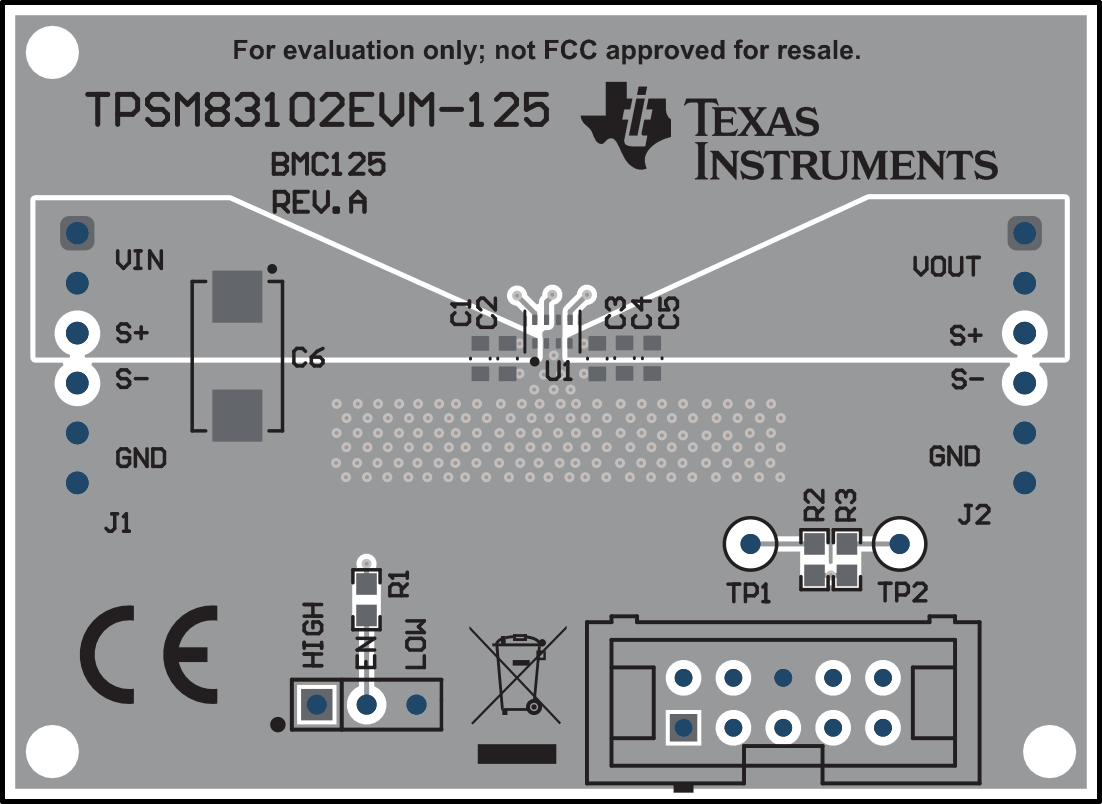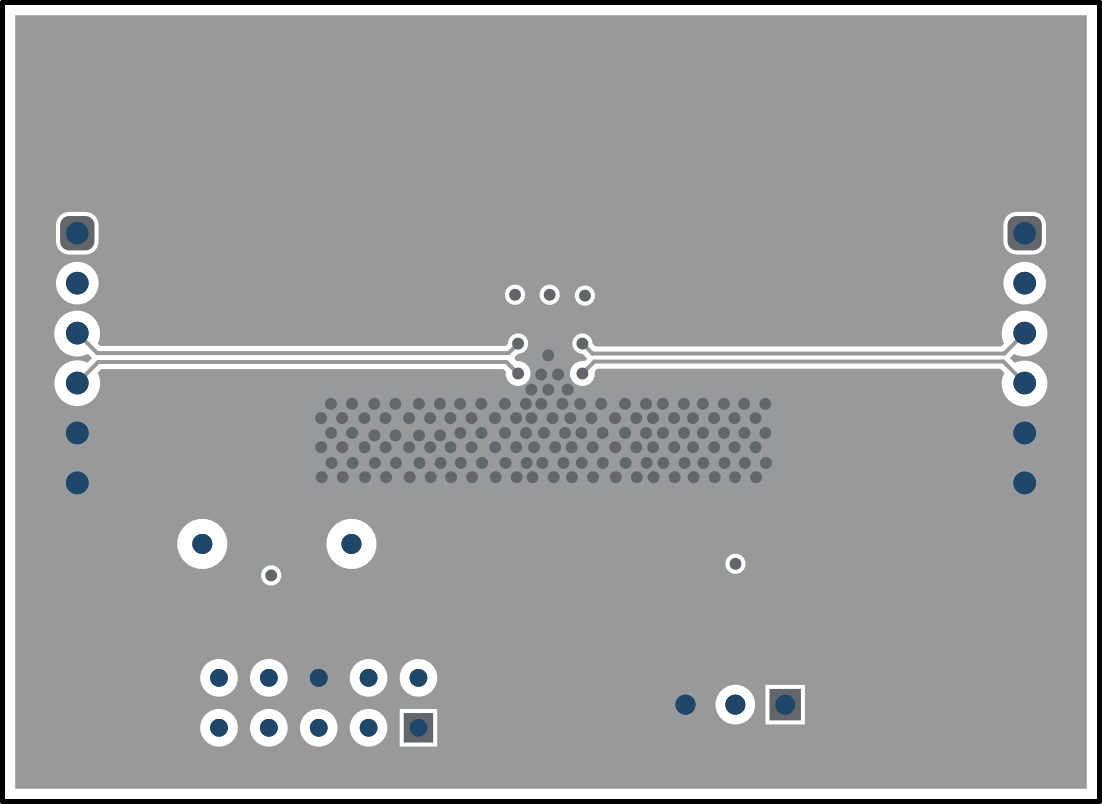SLVUD04 August 2024 TPSM83102
- 1
- Description
- Features
- 4
- 1Evaluation Module Overview
- 2Hardware
- 3Software
- 4Hardware Design Files
- 5Additional Information
4.2 Board Layout
This section provides the TPSM83102EVM-125 board layout and illustrations.
Figure 4-2 and Figure 4-3 show the component placement and PCB layout of the TPSM83102EVM-125.
 Figure 4-2 TPSM83102EVM-125 PCB - Top Layer
Figure 4-2 TPSM83102EVM-125 PCB - Top Layer Figure 4-3 TPSM83102EVM-125 PCB - Bottom Layer (Top View)
Figure 4-3 TPSM83102EVM-125 PCB - Bottom Layer (Top View)